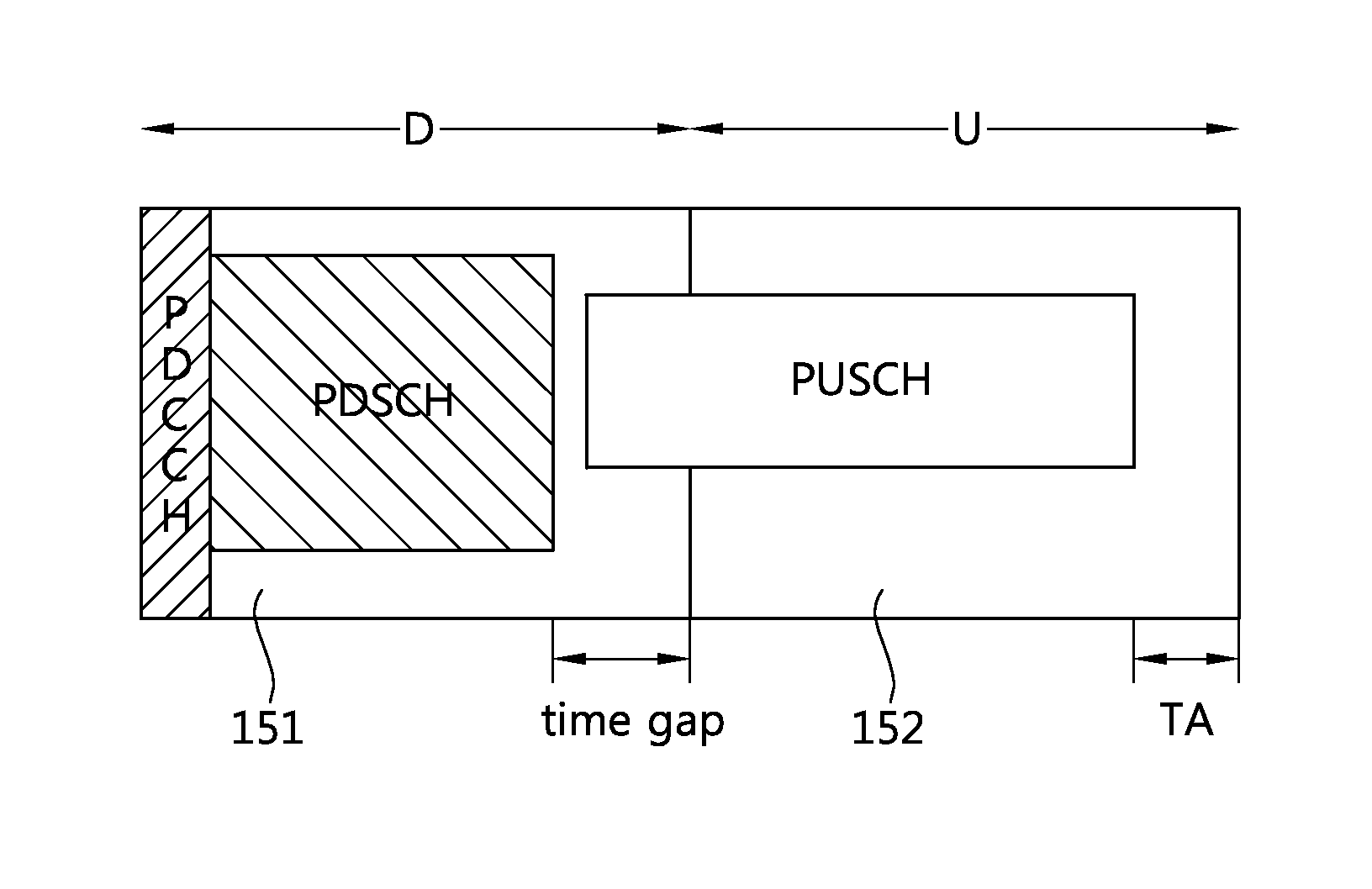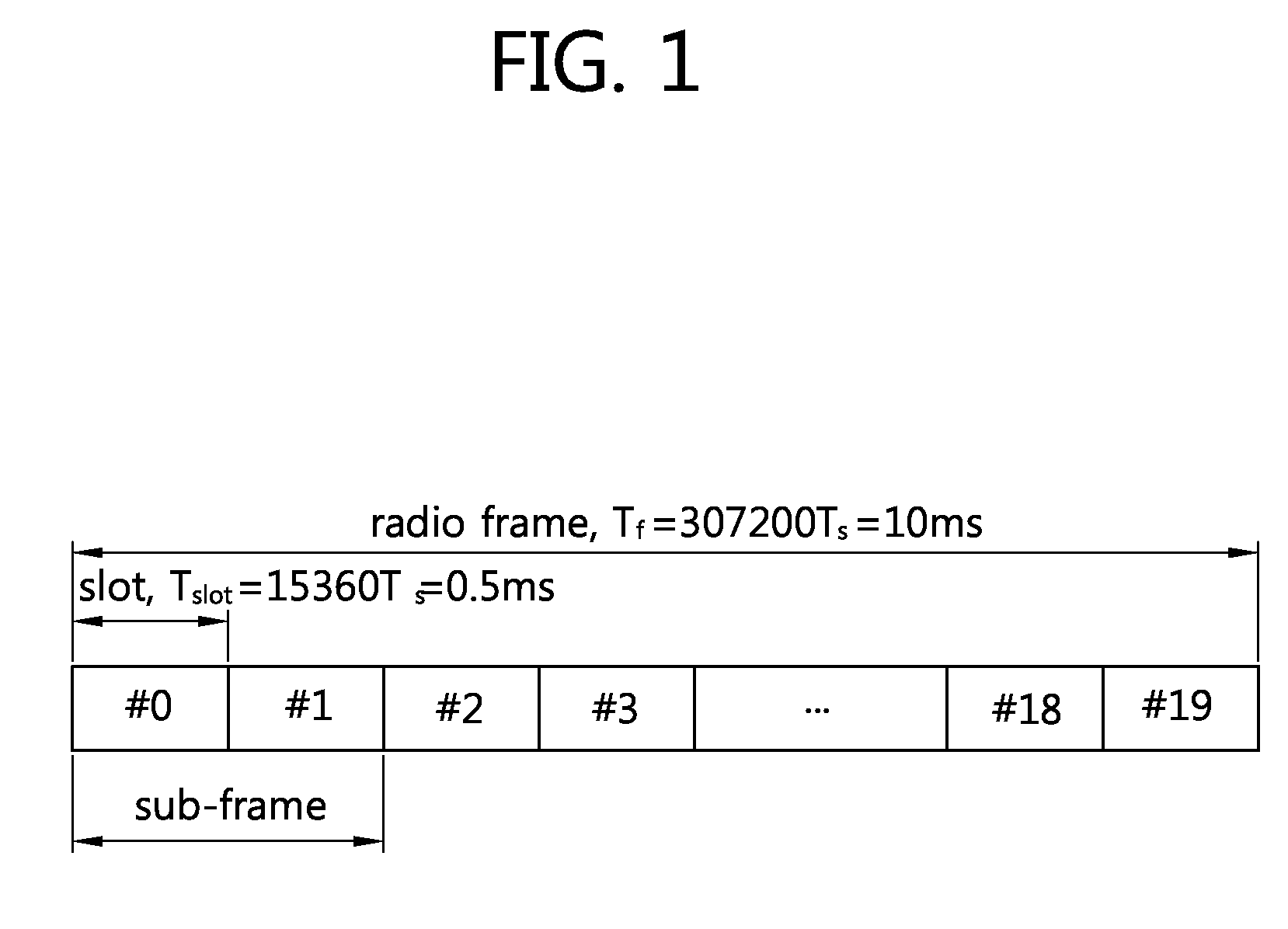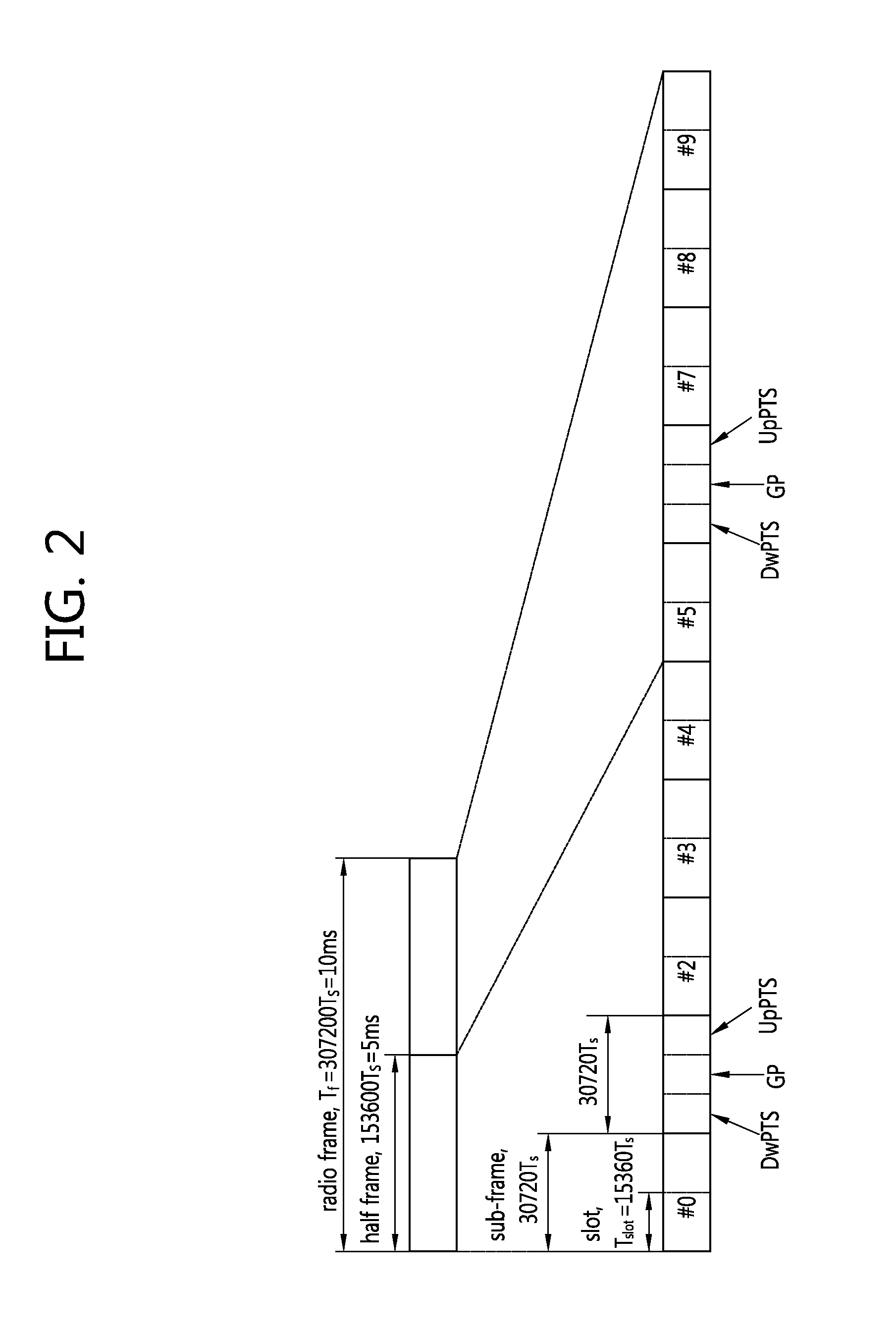Method and apparatus for transmitting/receiving signals with a terminal in TDD wireless communication system
a terminal and wireless communication technology, applied in the field of wireless communication, can solve the problems of high time delay and difficulty in efficiently allocating resources, and achieve the effect of increasing resource allocation efficiency
- Summary
- Abstract
- Description
- Claims
- Application Information
AI Technical Summary
Benefits of technology
Problems solved by technology
Method used
Image
Examples
Embodiment Construction
[0041]The terminal (User Equipment, UE) may be stationary or mobile and may be referred to as an MS (mobile station), an MT (mobile terminal), a UT (user terminal), an SS (subscriber station), a wireless device, a PDA (personal digital assistant), a wireless modem, or a handheld device.
[0042]The base station generally refers to a fixed station that communicates with the terminal and may be referred to as an eNB (evolved-NodeB), a BTS (Base Transceiver System), or an access point.
[0043]Communication from the base station to the terminal is denoted as downlink (DL), and communication from the terminal to the base station is denoted as uplink (UL). A wireless communication system including the base station and the terminal may be a TDD (time division duplex) system or an FDD (frequency division duplex) system. The TDD system is a wireless communication system that uses different times in the same frequency band to perform uplink and downlink transmission / reception. The FDD system is a ...
PUM
 Login to View More
Login to View More Abstract
Description
Claims
Application Information
 Login to View More
Login to View More - R&D
- Intellectual Property
- Life Sciences
- Materials
- Tech Scout
- Unparalleled Data Quality
- Higher Quality Content
- 60% Fewer Hallucinations
Browse by: Latest US Patents, China's latest patents, Technical Efficacy Thesaurus, Application Domain, Technology Topic, Popular Technical Reports.
© 2025 PatSnap. All rights reserved.Legal|Privacy policy|Modern Slavery Act Transparency Statement|Sitemap|About US| Contact US: help@patsnap.com



